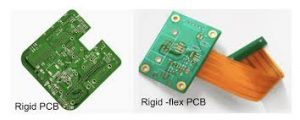PCB Boards for Medical Devices
The medical device industry is rapidly evolving to become more efficient and technologically advanced. As a result, devices are becoming smaller and more compact while maintaining the same level of functionality. To meet the demands of this sector, manufacturers are relying on flexible PCB boards in their designs. The ability of flex circuits to bend and adapt to the shape of a device makes them ideal for medical applications.
The most common type of flexible pcb board is an FR4 board that features copper laminate and insulating layers. This material is very flexible and has excellent corrosion resistance, which makes it ideal for medical applications. It also has high electrical conductivity and a low dielectric constant. Another specialized type of flex PCB is HDI (high density interconnect), which has a lower thickness than FR4. This allows it to fit into tight spaces.
Using flexible PCBs in medical devices is beneficial because it makes the design process more efficient and reduces production time. It also saves space and reduces weight, which is especially important for wearables and implantable devices that must be small enough to withstand harsh environments. Moreover, flex circuits can be easily interfaced with rigid PCBs through thin flat cables without the need for tall and bulky connectors.

Flexible PCB Boards for Medical Devices
Some of the most commonly used medical devices with flexible circuit boards are portable diagnostic equipment. These machines use a variety of imaging techniques to diagnose various health conditions, including ultrasounds, MRIs, and CT scans. Flexible PCBs are crucial for these devices because they can conform to their complex shapes and are much lighter than traditional PCBs.
Aside from portable diagnostic devices, a wide range of medical tools are now being made with flexible PCBs. These include cochlear implants that help hearing-impaired people hear, and responsive neurostimulators that help patients control seizures. The use of flexible PCBs is growing due to the demand for more efficient, compact devices with higher performance and reliability.
However, it is important to note that incorporating flexible PCBs into medical devices requires careful consideration. For example, the design should be carefully planned to avoid stress concentration points. One way to do this is to use teardrop (pad fillet)-shaped vias, which are less likely to break due to their larger diameters than standard round ones. Additionally, the thickness of the copper traces should be kept minimal to reduce stress on the connections.
It is also essential to keep in mind that flex PCBs require more inspection and testing than their rigid counterparts, so the medical device must pass a rigorous FDA approval process before being released for sale. Despite these challenges, the advantages of using flexible circuits in medical devices far outweigh the risks. In addition to reducing weight and increasing durability, flexible PCBs are more cost-effective than traditional rigid boards. Consequently, they are expected to dominate the market in the future as more and more companies invest in this innovative technology.